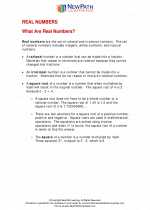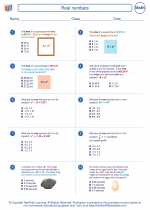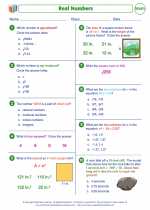Dodecahedron
A dodecahedron is a three-dimensional shape that has 12 pentagonal faces, 20 vertices, and 30 edges. Each face of a dodecahedron is a regular pentagon, which means all the sides and angles of the pentagon are equal.
Dodecahedron Formulae
To calculate the surface area (A) of a dodecahedron, you can use the formula:
A = 3√25 + 10√5 * s^2
Where s is the length of the side of the pentagon.
To find the volume (V) of a dodecahedron, you can use the formula:
V = (15 + 7√5) / 4 * s^3
Where s is the length of the side of the pentagon.
Properties of a Dodecahedron
Some key properties of a dodecahedron include:
- It has 12 faces, each of which is a regular pentagon.
- It has 20 vertices where three faces meet.
- It has 30 edges, where the faces meet.
- It is a regular convex polyhedron.
- It is one of the five platonic solids.
Study Guide
When studying dodecahedrons, it's important to understand the following concepts:
- Identifying the faces, edges, and vertices of a dodecahedron.
- Calculating the surface area and volume of a dodecahedron using the formulas provided.
- Understanding the properties of a dodecahedron, such as being a regular convex polyhedron and one of the five platonic solids.
- Recognizing real-life objects that have a dodecahedral shape, such as soccer balls and certain viruses.
Knowing these concepts will help you understand and apply the principles of dodecahedrons in various mathematical problems and real-world scenarios.
.◂Math Worksheets and Study Guides Eighth Grade. Real numbers

 Worksheet/Answer key
Worksheet/Answer key
 Worksheet/Answer key
Worksheet/Answer key
 Worksheet/Answer key
Worksheet/Answer key
 Worksheet/Answer key
Worksheet/Answer key
